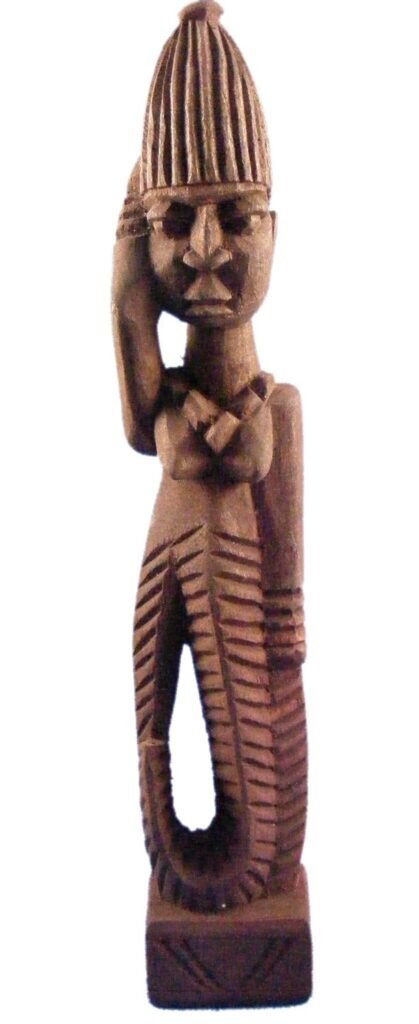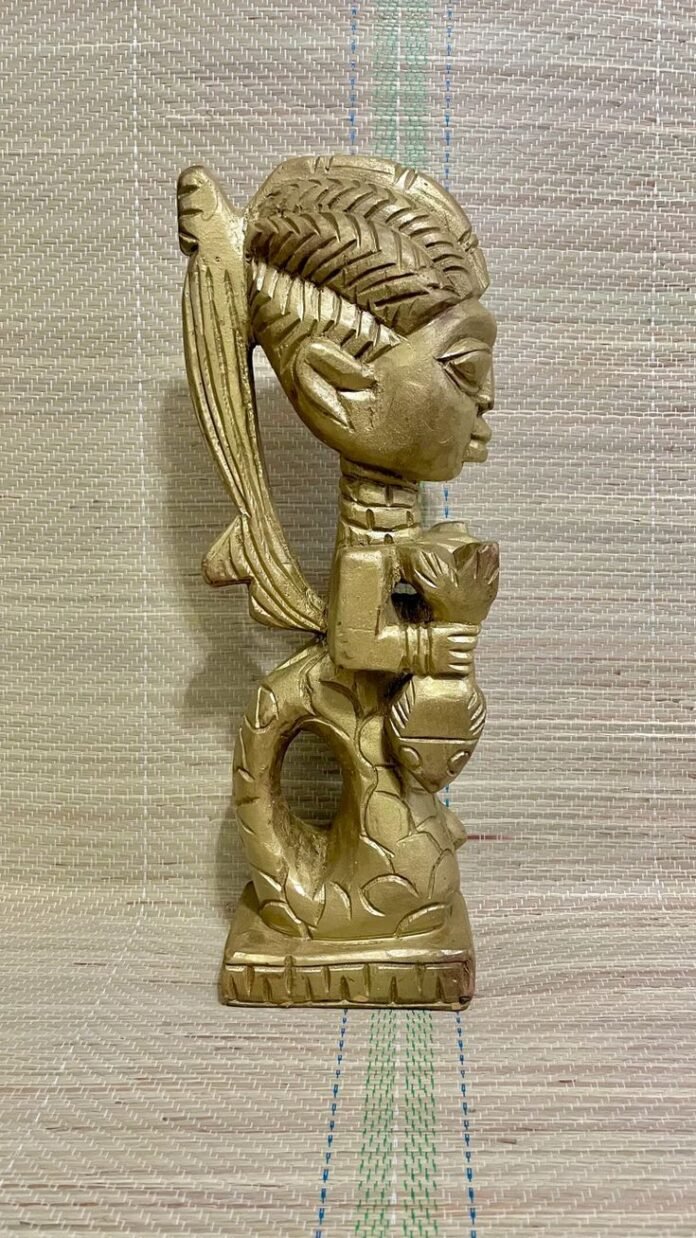Every year in October, the Yoruba people of South-Western Nigeria give thanks to the water spirit known as Yemoja. She is an ancient goddess, believed to be the maternal figure to the hundreds of nature-based orishas the Yoruba people revere. The special day is called ‘Odun Yemoja’, set aside by her followers to remember and celebrate their beloved goddess.
Yemoja is a pivotal part of the ancient Yoruba pantheon. Her name comes from the words ‘Yeye-omo-eja’ translated as ‘Mother whose children are fish’, and she is associated with water and the ocean. She is often depicted in lore as a mermaid with androgynous features and her followers stretch far, from West Africa, Cuba, Brazil, and many others.

Yemoja is the major water spirit from the Yoruba religion. She is the mother of all Orishas. She is also the mother of humanity. She is an orisha, in this case, patron spirit of rivers, particularly the Ogun River in Nigeria, and oceans in Cuban and Brazilian orisa religions. She is often syncretized with either Our Lady of Regla in the Afro-Cuban diaspora or various other Virgin Mary figures of the Catholic Church, a practice that emerged during the era of the trans-Atlantic slave trade. Yemọja is said to be motherly and strongly protective, and cares deeply for all her children, comforting them and cleansing them of sorrow. She is said to be able to cure infertility in women, and cowrie shells represent her wealth. She does not easily lose her temper, but when angered she can be quite destructive and violent, as the flood waters of turbulent rivers. Some of the priests of Yemọja believe that she used her fresh water to help Ọbàtálá in the molding of human beings out of clay.
Yemọja is often depicted as a mermaid by a number of devotees and is associated with water, feminine mysteries, and the moon in some diaspora communities. She is the protector of women. She governs everything pertaining to women; parenting, child safety, love, and healing. According to myth, when her waters broke, it caused a great flood creating rivers and streams and the first mortal humans were created from her womb.
Orisha (also given as Orisa and Orishas) are supernatural entities usually referred to as deities in the Yoruba religion of West Africa, though they are actually emanations or avatars of the supreme being Eledumare. Their number is usually given as 400 + 1 as a kind of shorthand for “without number” or innumerable.
Belief in the Orishas is thought to have developed between 300-500 BC but it is most likely much older, as this dating is supported by archaeological evidence and there are many West African sites still unexcavated. According to the Yoruba belief, Eledumare is too immense for the human mind to grasp and so releases different aspects of itself, each of which received a certain sphere of influence randomly. Eledumare threw the powers of dominion into the air, and whichever Orisha caught one was responsible for that sphere of influence.

Bode market, Molete is the setting for the occasion – here is where the Yemoja shrine can be found. The community is made up of narrow passageways and interconnected buildings, as is conversant with the classic mode of building for the Yoruba, and these passageways house tales, rituals, and relics as old as the Yoruba pantheon itself.
Communities reverberate warm auras as they prepare to honor the beloved goddess, whose presence is associated with peace, prosperity, and good fortune for those who honor her. Adults are dressed in blue and white regalia, the colors the goddess is associated with, and are accessorized with colorful beads, cowries, and flamboyant hairstyles. They share cheerful greetings and prep for the ceremony, while the laughter of children rings through the corridors.

The Yemoja shrine is the hub of activities to honor this great goddess. It is customary to pay a visit to the Yemoja shrine to pay respects and offer prayers and sacrifices to the deity, and in return, she blesses, protects, and guides. People offer all kinds of things from flowers, fruits, cooked food, and live animals. Sacrifices are a big part of Nigerian spirituality.
The excitement associated with the celebration of this goddess is fueled by music and dancing to songs in the goddess’ honour. Yemoja worship brings the communities together in a warm way. The celestial being is seen as a caring, protective, and healing figure, plus her association with water and the seas gives one a sense of calmness despite how powerful she can be. The rituals and ceremonies are done in the open and give a sense of community because they are practicing it together, so there is a strong sense of hope and optimism.
Another interesting thing to note is the depiction of the Goddess. Her imagery shows characteristics that blur the lines between male and female. For example, her statue shows male characteristics in the face and shoulders, but also features breasts used in nursing her children. This blending of traits suggests that ancient African spirituality creates and has always created spaces for the intersex, the trans, and all others in between.
Too often, especially in Nigerian societies, there exists the tendency to think in the binary – things must either be this or the other – but the world and the humans in it are way more complicated than that. Leading with love and showing no prejudice are the only ways to coexist.
When it is time to move the party to the waterside, worshippers parade excitedly alongside the crowd. Fruits, cooked meals, yams, small birds, and a goat in hand; she would be eating well on this day! This connects to the stream where the head priest offers these items to Yemoja.
And then, parents eagerly dunk their children into the water, as they pray for protection in the months and years to come.

Culled from foluoyefeso.com




